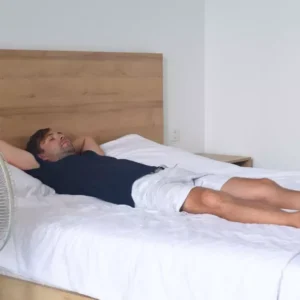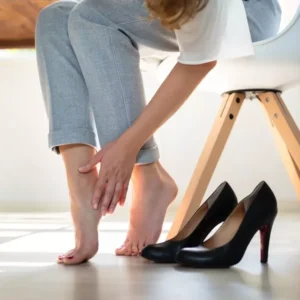Smartphone, television, illuminated advertising… The night offers its share of artificial lights likely to impact the circadian rhythm. In the case screens, “exposure to the blue light screens strongly stimulate the receptors in the retina, sending a ‘day’ signal to the biological clock which delays falling asleep and induces a phase delay. explains the National Institute of Sleep and Vigilance (INSV). But what are the consequences on health and more precisely on the risk of Type 2 diabetes ?
This is the question asked by researchers at Flinders University in Australia. They noticed that people who tended to sleep with artificial light on, such as a television or bedside lamp, had a 29% increased risk of type 2 diabetes. Their results are published in the journal The Lancet Regional Health – Europe.
A study published in 2022 in the scientific journal PNAS came to the same conclusion, exposure to even moderate lighting during the night could disrupt cardiovascular function and contribute to an increase in insulin resistance.
A disruption of the biological clock increases the risk of type 2 diabetes
First, the researchers explain that different factors, such as exposure to light during the night, can lead to a disruption of circadian rhythms, namely the internal clock of the human body. Previous research has highlighted the impact of an imbalance in the human body’s internal clock on the risk of type 2 diabetes. As a reminder, this pathology affects nearly 4.5% of the general population in France.
To arrive at these results, the researchers based themselves on a panel of 84,790 people from the UK Biobank, a long-term study to analyze the effects of environmental exposure and the development of certain diseases. The researchers asked participants to wear a light sensor for a week, which was able to record light exposure during the day and night. The researchers noted the occurrence of type 2 diabetes in the participants. The average follow-up duration was almost 8 years.
Type 2 diabetes: researchers call for sleeping in the dark
In their conclusions, the researchers note that “the risk of type 2 diabetes was higher in people exposed to brighter nighttime light and in people exposed to light patterns that could disrupt circadian rhythms.” More specifically, they note that people being those most exposed to light between midnight and six a.m. had a greater risk of type 2 diabetes.
According to the researchers, one of the explanations could be found in particular in the quality of sleep. “Exposure to light during the night could disrupt sleep, but awakenings during the night could also lead to greater nighttime light exposure, due to the use of light during awakenings”, he specifies in the study. These call for avoiding exposure to light at night.
Sources :
- Personal light exposure patterns and incidence of type 2 diabetes: analysis of 13 million hours of light sensor data and 670,000 person-years of prospective observation – The Lancet Regional Health – Europe.
- Sleep and screens – Screens and blue light, what you need to know – the National Institute of Sleep and Vigilance (INSV)
- Light exposure during sleep impairs cardiometabolic function – PNAS – 2022









